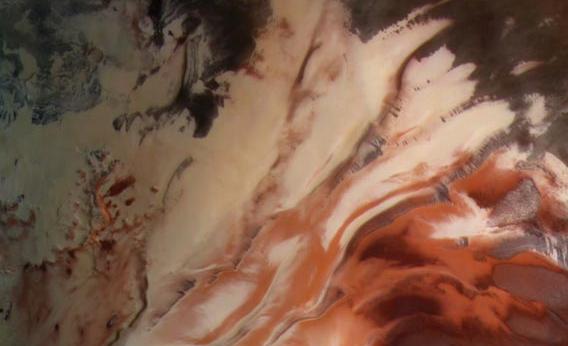Create a free profile to get unlimited access to exclusive videos, sweepstakes, and more!
Mars Australis

Mars is many things: Fascinating, scientifically interesting, historically interesting, dry, frozen, weird, inhospitable.
And as much as I like images of the red planet, one adjectival phrase I wouldnât have immediately thought to match with Mars is âjaw-droppingly artistically gorgeousâ. Iâll change that opinion right here and now:
That is the south pole of Mars, as seen by the European Space Agencyâs Mars Express orbiter. Itâs a combination of blue, green, and infrared images (put together into that stunning picture by Riding with Robots creator Bill Dunford). This exaggerates the ruddy ochre hue of the planet, but magnifies the overall impact of the picture. Itâs surreal; it looks a lot like the top of the mug of coffee I make myself every morning.
Where you see white is a vast region of permanently frozen water ice, many kilometers thick, covered in winter by a few-meter-deep veneer of frozen carbon dioxide, commonly called dry ice. In the Martian summer, the temperature at the pole gets high enough to turn the dry ice into a gas, but the water ice stays frozen. Not all the dry ice disappears, but even in winter the underlying water ice cap is far thicker than the dry ice above it.
Amazingly, the atmosphere of Marsâwhich is primarily carbon dioxideânoticeably thickens locally in the summer when the ice cap melts (for whichever hemisphere is experiencing summer at that time). On Earth we have water ice, which melts into a liquid. But carbon dioxide doesnât melt, it sublimates, turning directly from a solid into a gas. That goes into the tenuous Martian air, thickening it.
Not that itâs any great shakes then either: Air pressure on Mars is only about 1 percent or less of Earthâs. You wouldnât want to be there without wearing a spacesuit.
I imagine though that the view standing on the pole would be quite spectacular. Someday, perhaps, weâll get a chance to see for ourselves. Until then, Iâm actually rather happy to let our robot proxies do it for us.


























